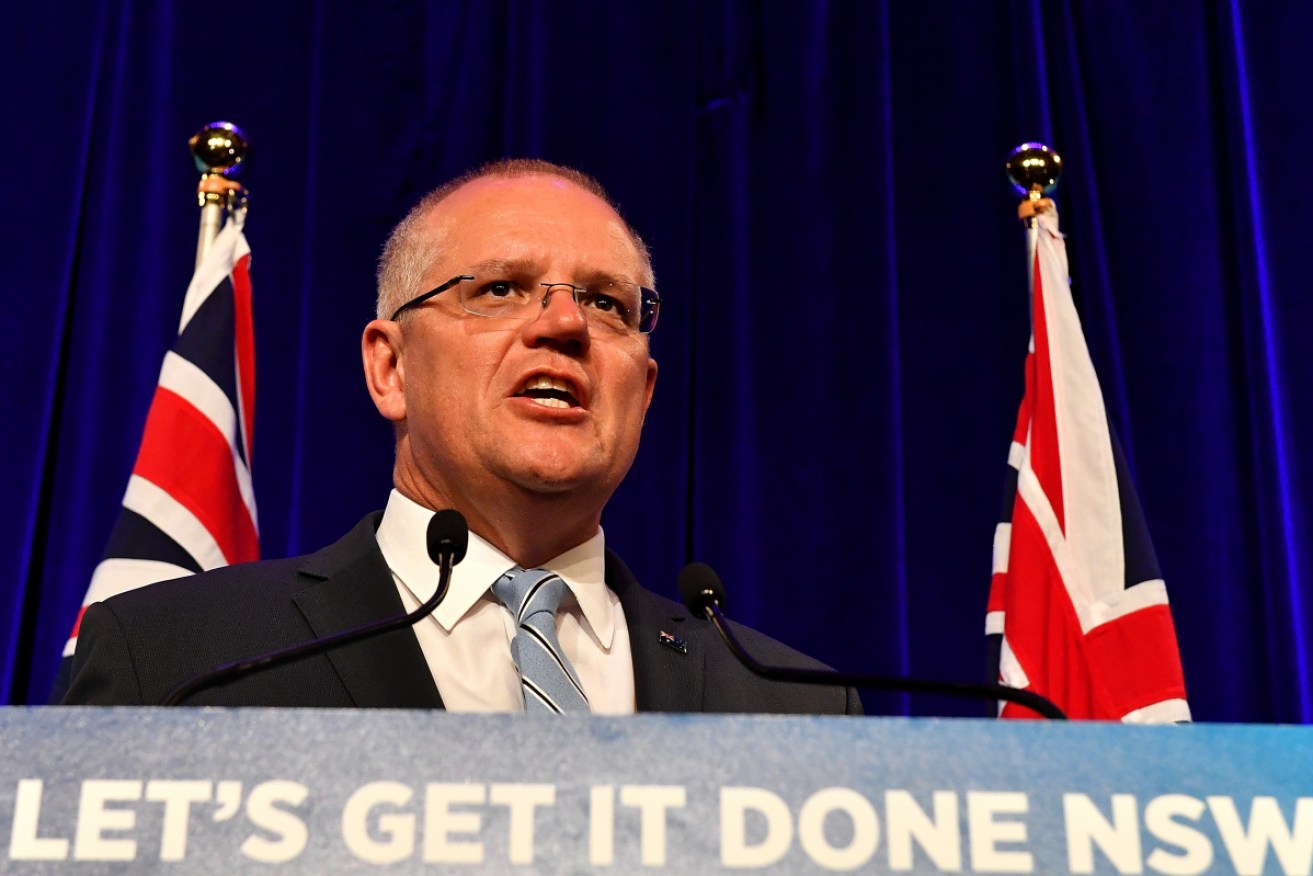Look out Scott, your favourite economic measure is turning down


The PM lauded the latest employment figures – but there's danger looming. Photo: AAP
“How good are more jobs?” is the latest incarnation of Scott Morrison’s favourite rhetorical flourish – but the finer details of the June labour market statistics actually weren’t double-thumbs-up-good at all.
Instead, it looks like unemployment is continuing to rise with forecasts of a national 5.5 per cent unemployment rate by the end of the year looking reasonable.
The Prime Minister understandably stressed the good news part of the statistics, the “20,000 additional full-time jobs” (There were actually 21,100, but let’s not quibble.)
“That is good news. Great news, more jobs. How good are more jobs?”
But total employment only increased by 500 jobs. All those full-time jobs were almost balanced by a drop in part-time jobs. Part-time or full-time, the number of hours worked was flat.
The mix of full-time and part-time jobs bounces around from month to month, particularly over the past two months with the May figures boosted by temporary election jobs.
When forced to talk about the economy, the PM and his ministers are trained to stress the number of jobs – because that’s the one strong figure they have as consumption and economic growth slow.
It was what the Reserve Bank governor Philip Lowe agreed to in his humiliating photo-op with Treasurer Josh Frydenberg: “More Australians have jobs today than ever before in Australian history.”
An RBA governor might have said something more facile in the past few decades, but I can’t recall it.
The key reason more Australians have jobs today than ever before is that there are many more Australians.
The secondary reason is the rise in the female participation rate, in keeping with the evolution of an advanced society and economy.
If the government wants to play cute with figures, it’s fair to repeat an earlier observation that six years of Coalition government has made no dint in the number of unemployed people.
Seasonally adjusted, there were 694,700 unemployed in September 2013, and there were 711,500 last month.
What concerns the RBA, and what should concern the government, is the outlook for employment. It’s not good.
The thing about employment numbers is that they are lagging indicators – the decision to hire or fire tends to come after the economy has strengthened or weakened.
AMP chief economist Shane Oliver summed up the outlook as well as anybody I’ve read: “After peaking in recent months, jobs growth looks to be slowing again. With our Jobs Leading Indicator slowing to its weakest since March 2014 on the back of slowing jobs ads, job vacancies and hiring plans, we see a further slowdown in jobs growth over the next six months as the housing construction downturn flows through the economy.
Tweet from @ShaneOliverAMP
“This is likely to see trend jobs growth fall well below the roughly 19,000 new jobs needed each month to absorb new entrants to the labour force. (Note while headline unemployment is reported as flat in June at 5.2 per cent in unrounded terms, it actually rose from 5.19 per cent to 5.24 per cent as growth in employment was less than growth in the labour force.)
“As a result, unemployment is likely to drift up to 5.5 per cent towards the end of the year.
“While labour market underutilisation fell back to 13.4 per cent in June from 13.7 per cent thanks to a fall in [normally volatile] underemployment, it remains very high, and with jobs growth expected to slow, it’s likely to remain high. This in turn will likely prevent much if any pick up in still-weak wages growth.”
Dr Oliver believes the RBA’s two interest rate cuts and the government’s tax refunds won’t reduce unemployment, only limit its rise to 5.5 per cent.
That’s a long way from the 4.5 per cent or so that the RBA hopes will be enough to spark healthy wage rises.
That’s why Dr Oliver thinks the RBA will eventually be forced to cut rates even further, bringing the cash rate down to 0.5 per cent next year. Current policy settings just aren’t doing the job.
And here’s the tricky thing about that 4.5 per cent unemployment target: NSW has achieved it and wages growth hasn’t done what the textbooks have predicted.
This colourful graph I’ve lifted from Pete Wargent’s blog tells another couple of stories.

One is that you can see the turn up in the NSW unemployment rate, the champion employment state.
The other is our two-speed economy.
While we talk about Australia’s 5.2 per cent unemployment rate, the reality is that outside NSW and Victoria, it remains stuck around 6 per cent – a very long way from the 4.5 per cent target, let along the 4 per cent that might be closer to the necessary level.
How good are jobs? Very.
How concerning is a government in denial about where its policies are taking us? Very.








